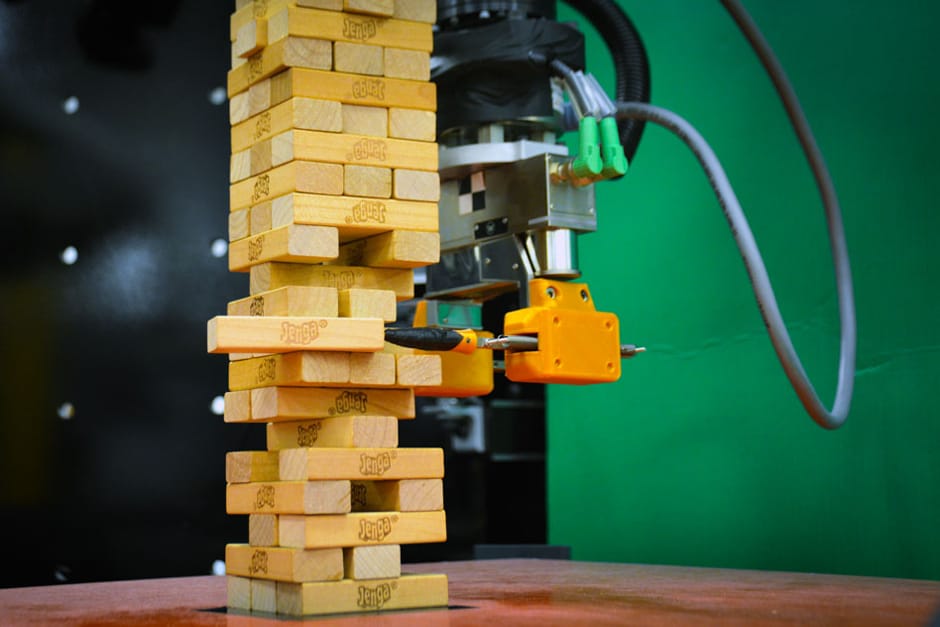
Developed by MIT engineers and detailed in Science Robotics, the robot uses its soft-pronged gripper, force-sensing wrist cuff, and an external camera to see and feel the tower and its individual blocks.
For the uninitiated, Jenga comprises 54 rectangular blocks stacked in 18 layers of three blocks each, with the blocks in each layer oriented perpendicular to the blocks below. The aim is to extract a block and place it at the top of the tower – and build a new level - without toppling the entire structure.
As the robot pushes against a block, a computer takes in visual and tactile feedback from its camera and cuff and compares these measurements to moves that the robot previously made. It also considers the outcomes of those moves - specifically, whether a block, in a certain configuration and pushed with a certain amount of force, was successfully extracted or not. In real-time, the robot then "learns" whether to keep pushing or move to a new block, in order to keep the tower from falling.
Alberto Rodriguez, the Walter Henry Gale Career Development Assistant Professor in the Department of Mechanical Engineering at MIT, said the robot demonstrates the ability to quickly learn the best way to carry out a task from tactile, physical interactions as well as visual cues.
"Unlike in more purely cognitive tasks or games such as chess or Go, playing the game of Jenga also requires mastery of physical skills such as probing, pushing, pulling, placing, and aligning pieces. It requires interactive perception and manipulation, where you have to go and touch the tower to learn how and when to move blocks," Rodriguez said. "This is very difficult to simulate, so the robot has to learn in the real world, by interacting with the real Jenga tower. The key challenge is to learn from a relatively small number of experiments by exploiting common sense about objects and physics."
He said the tactile learning system the researchers have developed can be used for tasks that need careful physical interaction, including separating recyclable objects from landfill and assembling consumer products.
The research received support from the US National Science Foundation through the National Robotics Initiative.




Glasgow trial explores AR cues for autonomous road safety
They've ploughed into a few vulnerable road users in the past. Making that less likely will make it spectacularly easy to stop the traffic for...